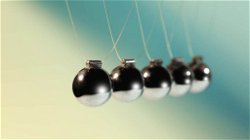Development and Operation of Automobiles and Internal Combustion Engines
Adina Anderson
. 3 min read
While there is evidence that wheels have been used for transportation for at least 5500 years, the first automobile was not invented until 1885. In that year, German engineer Karl Benz (1844–1929), along with other developers, created the very first gas-powered automobile by attaching a miniature gasoline (petrol) engine to a three-wheeled cart. He called it the Benz Patent Motorwagen. Nikolaus Otto (1832–1891), another German engineer and developer, was arguably even more important than Benz because he was the man who had invented the gasoline engine in the first place, about two decades earlier.

What Exactly are a Car and an Automobile?
An automobile is a passenger-carrying, self-propelled, land-based motor vehicle designed for transporting people over short distances. It typically has four wheels and an internal combustion engine that is most commonly fueled by gasoline, which is a liquid product derived from petroleum. It was formerly known as a motorcar but is now more commonly referred to as a car.
Internal Combustion Engine Components Include the Following:
Cylinder: These components of an automobile engine can be found in the engine block, which is also referred to as the cylinder block. It has a liner inside of it or sleeves that surround it.
When subjected to work, this liner becomes worn out and can easily be replaced with a new one. Combustion can take place because the cylinders have a portion or space that allows the piston to move upward and downward, allowing for movement.
Piston: The first two rings are compression rings, and the piston's outer edge has a chamfered profile, which contributes to the blowby effect. The third ring is called the oil ring, and its primary function is to prevent oil from getting into the combustion chamber while also ensuring that oil is distributed evenly along the cylinder walls.
Crankshaft: A crankshaft is a rotating shaft that converts the reciprocating motion of a piston into a rotational motion.
One example of a connecting rod: One of the most important components of an internal combustion engine is referred to as a con rod and is also known as a connecting rod. Despite the fact that it is employed on steam engines as well, it is of critical significance on vehicles.
Cylinder head: The cylinder head is a three-piece assembly that consists of a lower member that contains the gas passages, serves as a mounting for the injector valves and the ignition plug, and forms part of the combustion chamber.
Camshafts: Camshafts are relatively straightforward components that consist of a length of rod or shaft with individual cam lobes positioned at various points along it. The shaft is referred to as cams when it has these lobes on it.
Valvetrain: The portion of an internal combustion engine that is responsible for regulating how the intake and exhaust valves work is referred to as the valve train. An intake valve is present, and its job is to let the air-fuel mixture into the combustion chamber.
The operation of a car or automobile: The vast majority of automobiles make use of engines that are propelled by internal combustion. Through valves in this type of engine, a mixture of air and gasoline is sucked into a cylinder that is shaped like a tube.
The typical number of cylinders in an automobile engine ranges from four to eight
The air and fuel mixture that is introduced into the engine is not capable of igniting on its own. It requires a spark of electric energy. This is produced by gizmos referred to as spark plugs. A battery provides them with their source of electric current. The battery supplies power to a number of the vehicle's components, including the instruments, lights, horn, turn signals, and windshield wipers.
The purpose of an automobile's engine cooling system is not only to maintain the engine's temperature
A radiator, which is responsible for dissipating heat, a fan or fans, which are responsible for ensuring adequate airflow for radiator cooling, a thermostat valve, which is responsible for opening when the desired operating temperature is reached, and a water pump, which is also known as a coolant pump, which is responsible for circulating coolant through the engine, hoses, and other components. The cooling system in today's vehicles typically includes an expansion tank.
More Stories from
The Law of Conservation of Mass: A Fundamental Principle in Science
The article highlights the significance of the law, provides experimental evidence, and discusses its applications in various scientific disciplines, including chemistry, physics, environmental science, engineering, and astrophysics.
What is the Most Exciting Fact About the Solar System?
It highlights the vastness of our solar system and the history of astronomy's shift from a divine.
Understanding AC and DC: The Fundamentals of Electric Power
This article provides a concise overview of Alternating Current (AC) and Direct Current (DC), the two fundamental types of electrical power.
The Mysteries of the Brain: Recent Discoveries in Neuroscience
From the brain's remarkable adaptability to the profound link between the gut and brain, explore the cutting-edge findings shaping our understanding of cognition and behavior.
Defense Advanced Research Projects Agency (DARPA): Pioneering Innovation in Defense Technology
This article provides a concise overview of the Defense Advanced Research Projects Agency (DARPA), its mission, and its key contributions to revolutionizing defense technology.






.png?width=40&aspect_ratio=1:1)

.png?width=40&aspect_ratio=1:1)




